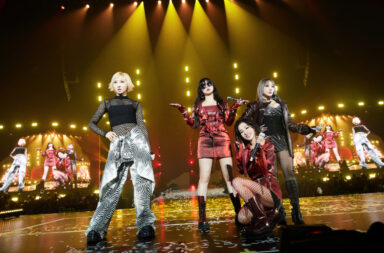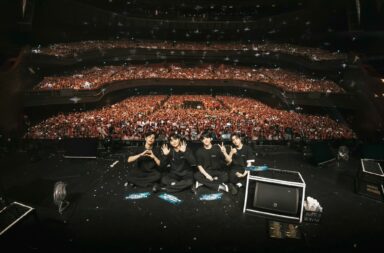
Technology has long been an important part of K-pop, particularly when it comes to fostering connections with fans, one of the most crucial tasks for an idol. This has never been truer than in the present moment, with a global pandemic making in-person events impossible for potentially months to come. As the K-pop industry works to remotely maintain fan connections, it has embraced a relatively new medium: online concerts.
South Korea has a well-earned reputation as a digitally advanced country. In 2018, it had a 95.9% internet penetration rate (the percentage of a country’s population that is using the internet), and had the highest R&D spending to GDP ratio in the world. It should come as no surprise then that the K-pop industry is a tech-savvy one, particularly since the South Korean government is a committed backer of both the country’s technological endeavors and the Hallyu wave. In recent years especially, entertainment companies and idols have proven their digital prowess, harnessing the power of platforms like YouTube, V Live, Instagram, and Twitter to engage with both domestic and global fans.
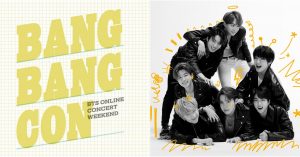
The K-pop industry has leaned into its technological expertise in response to Coronavirus-related challenges. Since events with physical audiences are off the table for the foreseeable future, idols have turned to live streams and other social media tools to provide content for homebound fans. Meanwhile, companies have demonstrated innovation through a variety of remote events, including online fan meetings and streamed comeback showcases. One of the most notable digital offerings was BTS’ Bang Bang Con, a two-day free streaming extravaganza of previously recorded concerts and fan meetings that drew more than 50 million cumulative views.
The industry’s well-developed technological abilities have allowed it to both enhance existing digital offerings, and develop new ones in a timely manner, more or less filling the void created by the inability to hold traditional concerts or fan meets. This has enabled artists to stay connected with their fans, and to continue releasing and successfully promoting new music. It is also worth noting that South Korea’s largely effective pandemic response has made conditions in the country a lot safer than in certain other parts of the world. This enables a level of mobility and freedom that allows K-pop artists to create and record large-scale remote content, something that would not be an option in more dire circumstances.

The most ambitious digital endeavor has been online concerts. K-pop concerts are pretty much the holy grail of fandom. They are big and bold, famous for containing indescribable amounts of energy, as thousands of fans and the idols they adore collide for a few unforgettable hours. The idea of moving such an event online seems crazy, an impossible task that could never live up to expectations. Still, the K-pop industry is giving it a go, attempting to create remote concerts that can temporarily replace, and perhaps eventually coexist with, in-person performances.
Recently, I had the opportunity to “attend” three online concerts in the span of a week. On May 19-21, Trip to K-pop, a three-day digital festival featuring more than a dozen artists, including iKon, KARD, and Oh My Girl, aired live on several online and TV channels. May 24 saw TVXQ become the latest group to perform via SM Entertainment and Naver’s remote concert platform, Beyond Live. Finally, on May 25, popular mobile app TikTok hosted TikTok Stage Live from Seoul, featuring Apink, Kang Daniel, and Monsta X, among others. These three online concerts show the wide range of remote performance options the K-pop industry is testing, and highlight both the challenges and unique opportunities provided by digital concerts.
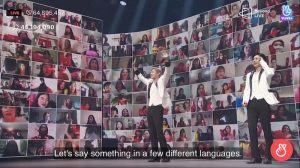
A clear priority of all three events was, unsurprisingly, connecting with fans. Each included some version of a Q&A session with artists, often using questions directly from fans. TikTok Stage Live had a constant scroll of viewer comments running alongside the bottom of the broadcast, and at certain points, artists read and responded to these comments in real time. Beyond Live took fan interaction to the next level by projecting dozens of Cassiopeias onto screens surrounding the venue. Fans could wave light sticks, enthusiastically shout fanchants, and for a few lucky attendees, ask TVXQ questions virtually face-to-face. This technological innovation had the dual benefit of giving fans the opportunity to fully participate in the performance, and livening up the concert space, filling it with the voices and faces of audience members. Regardless of the specific strategy, each of the three online concerts used their digital format to personalize moments of fan interaction in ways that wouldn’t be possible in a physical venue, highlighting a potential strength of the medium.
The staging and pacing of the performances were less successful. Both Trip to K-pop and TikTok Stage Live suffered from their resemblance to music shows. Trip to K-pop in particular, with its simple staging and clunkily interspersed interviews with artists, did not achieve a concert-like feel. As music shows are still regularly airing, a “concert” that resembles those programs is redundant. All three events also felt slightly bloated, despite not actually exceeding average concert length. This probably has to do with their digital nature. I found it much harder to stay focused on the performances when watching from my phone or computer, versus if I’d been in a concert hall. Attention spans differ between remote and physical activities, something event organizers should keep in mind when planning future digital performances.
Technology, of course, is at the heart of the matter, and proved to be a mixed bag. All three performances had technical issues, ranging from audio problems to timing delays and blurry video quality. TikTok Stage Live was the least challenged concert, suffering from only a few buffers, proving that partnering with a technically-sound established app can be a smart move. Beyond Live demonstrated the positive possibilities of technology, with bold special effects and computer graphics enhancing several performances. The fiery backdrops of TVXQ’s final set were particularly striking.
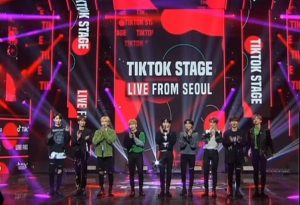
All three concerts spotlighted digital performances’ most unique and promising attribute: their ability to reach unlimited people in unlimited places. Nearly every participating artist in each event emphasized how happy they were to connect with fans from across the globe through their remote performances. Unbothered by the logistics of a physical tour, digital concerts have the ability to reach previously untapped audiences in locations unlikely to ever host artists in-person. Additionally, because remote performances are not limited in size by physical venues, ticketed events like Beyond Live can quite literally sell an infinite number of admissions. In other words, digital concerts have almost boundless potential when it comes to global outreach and generating revenue.
What is the future of the online concert? In the immediate, very bright. In spite of several challenges, and because of various innovations, each concert I tuned into showcased the talents of their performers and were engaging, worthwhile events. Looking ahead, several high-profile digital performances are coming this Summer. BTS will present Bang Bang Con the Live in June, a ticketed concert sure to draw droves of enthusiastic ARMYs. KCON USA will move online and become KCON:TACT 2020, with a planned mix of paid and free content that will include performances, panels, meet and greets, and behind-the-scenes offerings.
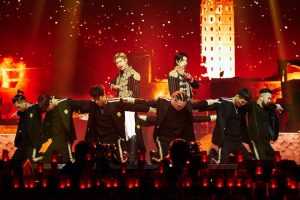
In the long-term, the future of digital concerts is less certain but full of promise. More than 75,000 people tuned into the inaugural Beyond Live concert with SuperM, proving that there is a significant audience for remote performances, even if they require a paid ticket. It’s hard to imagine online concerts completely replacing physical ones, but integrated experiences and stand-alone remote offerings are a distinct future possibility. One thing is for sure: if online concerts are to have a post-pandemic future, it’ll be because they lean into their unique digital strengths, rather than trying to emulate the live concert experience.
The K-pop industry has strived to maintain fan connections during an unprecedented global crisis through online concerts and other immersive digital events. The industry’s technological prowess places it in an advantageous position to take this opportunity to develop impressive remote experiences, offerings that can be a part of the K-pop landscape long after this pandemic (fingers-crossed) has ended. Online concerts present an almost limitless opportunity to increase fan outreach across the globe. If approached thoughtfully and innovatively, they could become an exciting new item in K-pop’s technological toolbox.
(The Atlantic, Business Korea, Forbes, ITU News, KCON USA, The Korea Herald, Naver [1][2][3][4][5], Rolling Stone India, Statista, Teen Vogue, Vulture, World Economic Forum, YouTube. Images via Big Hit Entertainment, JYP Entertainment, SM Entertainment, Starship Entertainment, TikTok, V Live)
